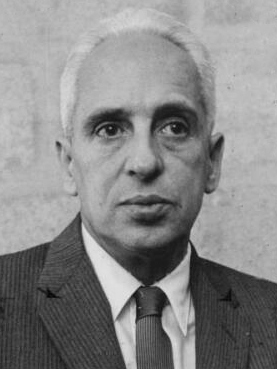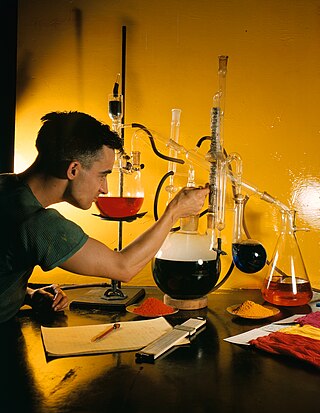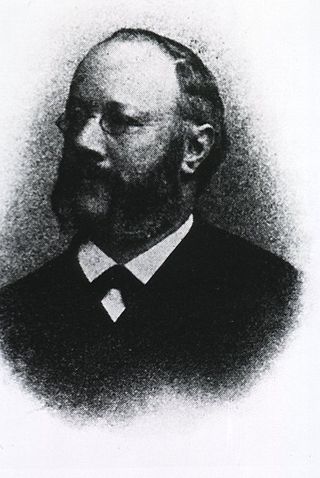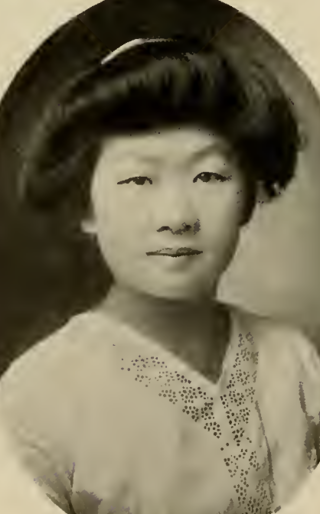
Severo Ochoa de Albornoz was a Spanish physician and biochemist, and winner of the 1959 Nobel Prize in Physiology or Medicine together with Arthur Kornberg for their discovery of "the mechanisms in the biological synthesis of deoxyribonucleic acid (DNA)".
Benedict's reagent is a chemical reagent and complex mixture of sodium carbonate, sodium citrate, and copper(II) sulfate pentahydrate. It is often used in place of Fehling's solution to detect the presence of reducing sugars and other reducing substances. Tests that use this reagent are called Benedict's tests. A positive result of Benedict's test is indicated by a color change from clear blue to brick-red with a precipitate.

Edward Calvin Kendall was an American biochemist. In 1950, Kendall was awarded the Nobel Prize for Physiology or Medicine along with Swiss chemist Tadeusz Reichstein and Mayo Clinic physician Philip S. Hench, for their work with the hormones of the adrenal glands. Kendall not only researched the adrenal glands, he also isolated thyroxine, a hormone of the thyroid gland and worked with the team that crystallized glutathione and identified its chemical structure.
William Cumming Rose was an American biochemist and nutritionist. He discovered the amino acid threonine, and his research determined the necessity for essential amino acids in diet and the minimum daily requirements of all amino acids for optimal growth.

In chemistry, a chemical test is a qualitative or quantitative procedure designed to identify, quantify, or characterise a chemical compound or chemical group.

James Bertram Collip was a Canadian biochemist who was part of the Toronto group which isolated insulin. He served as the chair of the department of biochemistry at McGill University from 1928 to 1941 and dean of medicine at the University of Western Ontario from 1947 to 1961, where he was a charter member of The Kappa Alpha Society.

The Journal of Biological Chemistry (JBC) is a weekly peer-reviewed scientific journal that was established in 1905. Since 1925, it is published by the American Society for Biochemistry and Molecular Biology. It covers research in areas of biochemistry and molecular biology. The editor is Alex Toker. As of January 2021, the journal is fully open access. In press articles are available free on its website immediately after acceptance.

Otto Knut Olof Folin was a Swedish-born American chemist who is best known for his groundbreaking work at Harvard University on practical micromethods for the determination of the constituents of protein-free blood filtrates and the discovery of creatine phosphate in muscles.

Willey Glover Denis was an American biochemist and physiologist. She was noted particularly for her collaborations with Otto Folin, including studies of protein metabolism. She was a pioneer in the field of clinical chemistry and the measurement of protein in biological fluids (blood, urine and cerebrospinal fluid. She also developed the first reliable method of assaying lead in body tissue and waste.
Joseph Stewart Fruton, born Joseph Fruchtgarten, was a Polish-American biochemist and historian of science. His most significant scientific work involved synthetic peptides and their interactions with proteases; with his wife Sofia Simmonds he also published an influential textbook, General Biochemistry. From 1970 until his death, Fruton worked extensively on the history of science, particularly the history of biochemistry and molecular biology.

Robert Kellogg Crane was an American biochemist best known for his discovery of sodium–glucose cotransport.
Oliver Howe Lowry was an American biochemist. He devised the Lowry protein assay, the subject of the most-cited scientific paper in history.

The Jaffe reaction is a colorimetric method used in clinical chemistry to determine creatinine levels in blood and urine. In 1886, Max Jaffe (1841–1911) wrote about its basic principles in the paper Über den Niederschlag, welchen Pikrinsäure in normalem Harn erzeugt und über eine neue Reaction des Kreatinins in which he described the properties of creatinine and picric acid in an alkaline solution. The color change that occurred was directly proportional to the concentration of creatinine, however he also noted that several other organic compounds induced similar reactions. In the early 20th century, Otto Folin adapted Jaffe's research into a clinical procedure. The Jaffe reaction, despite its nonspecificity for creatinine, is still widely employed as the method of choice for creatinine testing due to its speed, adaptability in automated analysis, and cost-effectiveness, and is the oldest methodology continued to be used in the medical laboratory. It is this nonspecificity that has motivated the development of new reference methods for creatinine analysis into the 21st century.
Benedict is a patronymic surname, referring to the given name Benedict, which comes from the Latin word meaning "blessed". The name was popularized by Saint Benedict of Nursia, the founder of the Order of Saint Benedict and thereby of Western Monasticism (Benedictine).

Mary Van Rensselaer Buell was the first woman to earn a Ph.D. in biochemistry at the University of Wisconsin. She carried on extensive research in nutrition and physiological chemistry at the University of Wisconsin, University of Iowa, Johns Hopkins University, Washington University in St. Louis, and the University of Chicago.
Albert Baird Hastings was an American biochemist and physiologist. He spent 28 years as the department chair and Hamilton Kuhn Professor of Biological Chemistry at Harvard University. After retiring from Harvard, Hastings moved to the Scripps Clinic and Research Foundation, where he became the director of the division of biochemistry and helped to establish the institution's emerging program in basic research. In 1966, he became one of the first faculty members at the University of California, San Diego's new medical school. His research focused on the biochemical underpinnings of physiology and included characterizing acid-base homeostasis in blood and pioneering the use of radioactive tracers for studying metabolism. Hastings received a number of honors and awards for his work, including election to the National Academy of Sciences in 1937 and the President's Medal for Merit in 1948 following his wartime service on the Committee for Medical Research. Hastings died of heart failure in 1987 at age 91.

Anne Elizabeth Kendrick Benedict was an American author of children's literature focusing on scientific topics, such as physiology, and an author of religious periodicals.

William Mansfield Clark was an American chemist and professor at the Johns Hopkins University. He studied oxidation-reduction reactions and was a pioneer of medical biochemistry.

Chi Che Wang, also known as Wang Chi-Lian, was a Chinese biochemist and college professor. Wang was one of the first Chinese women to make a career in American higher education and scientific research.













